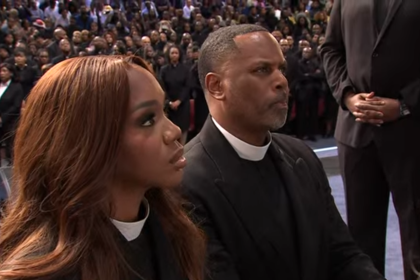That panicked look in your partner’s eyes when plans change last minute isn’t just affecting them—it’s reshaping your entire relationship. While you might think their anxiety is their personal battle, the truth is it’s silently altering how you both connect, communicate, and even how you see each other. Their racing thoughts and persistent worries aren’t contained within their mind—they’re spilling over into every aspect of your shared life together.
The invisible weight of anxiety doesn’t just rest on their shoulders. It subtly shifts the dynamic between you, creating patterns you might not even recognize until they’ve become deeply entrenched. Understanding how anxiety operates as an unwelcome third party in your relationship is the first step toward preventing it from taking the wheel. Let’s explore how you can navigate this complicated terrain together without letting anxiety dictate the terms of your love story.
When logic meets emotion in relationship battles
One of the most frustrating dynamics when dating someone with anxiety is feeling like you’re speaking entirely different languages. You approach problems with logic and solutions, while they respond from a place of overwhelming emotion and fear.
This communication mismatch creates a pattern where you feel like nothing you say helps, and they feel like you don’t understand what they’re experiencing. You offer rational explanations about why they shouldn’t worry about being late to the party, while they’re physically experiencing racing heartbeat and genuine panic that feels very real.
Breaking this cycle requires recognizing that anxiety isn’t rational, and trying to reason someone out of an anxious state rarely works. Instead of attempting to solve their anxiety with logic, acknowledge their feelings first. Simple statements like “I can see this is really tough right now” validate their experience without requiring you to agree with their anxious thoughts.
Their avoidance becomes your relationship limitation
Anxiety often leads to avoidance behaviors that can slowly shrink your shared world. Your partner might start declining social invitations, avoiding certain locations, or backing out of activities that trigger their anxiety. Over time, these individual restrictions can become relationship restrictions.
You might find yourself automatically turning down invitations on behalf of both of you, knowing your partner will be uncomfortable. Perhaps you’ve stopped suggesting certain restaurants or activities altogether to avoid triggering their anxiety. This gradual narrowing of your shared experiences can lead to resentment if not addressed.
The key is finding balance between accommodation and enablement. Supporting your partner doesn’t mean allowing anxiety to dictate all your choices as a couple. Work together to identify which situations are genuinely challenging versus which ones might benefit from gentle encouragement. Creating a system where they can try anxiety-provoking activities with an easy exit strategy often helps expand comfort zones gradually.
Their physical symptoms create emotional distance
Anxiety isn’t just mental—it manifests physically in ways that can affect intimacy and connection. Your partner might experience tension in their body, making physical touch uncomfortable during anxious periods. Their racing heart and shallow breathing can make calm conversations nearly impossible during heightened states.
These physical manifestations can create unexpected barriers between you. A simple hug might feel overwhelming when they’re anxious. A conversation about future plans might trigger physical symptoms that shut down communication entirely. Even sleep can be affected, with their insomnia disrupting your rest as well.
Learning to recognize these physical signs helps you understand when anxiety is present even if they haven’t verbalized it. Rather than taking physical withdrawal personally, recognize it as a symptom. Asking simple questions like “Would touch help or make things worse right now?” acknowledges their physical experience and gives them agency in finding comfort.
The reassurance treadmill exhausts both of you
One of the trickiest patterns in relationships affected by anxiety is the constant need for reassurance. Your partner might repeatedly ask if you’re angry, if things are okay, or seek confirmation about minor details that seem insignificant to you.
This pattern creates a paradoxical situation where providing reassurance works temporarily but actually strengthens anxiety’s grip long-term. Each time you reassure them, their anxiety subsides momentarily, but returns stronger later, requiring even more reassurance. Meanwhile, you grow increasingly exhausted by the constant emotional demands.
Breaking this cycle requires collaborative understanding. Work together to recognize when reassurance-seeking is happening, and develop alternative responses that provide comfort without feeding the anxiety loop. Instead of simply saying “Everything’s fine” for the twelfth time, try acknowledging their feeling while gently redirecting attention elsewhere.
Their anxiety shapes your decision-making process
Over time, you might notice yourself making decisions through the filter of your partner’s anxiety. You carefully consider how every plan, comment, or suggestion might trigger their worries. This hypervigilance becomes exhausting and can lead to walking on eggshells in your own relationship.
This pattern often develops so gradually that you don’t notice until it’s fully established. Maybe you automatically check restaurant reviews for potential triggers before suggesting dinner out. Perhaps you craft messages carefully to avoid wording that might spark their overthinking. While some consideration is healthy, excessive accommodation reinforces anxiety’s control.
Reclaiming balanced decision-making starts with awareness. Notice when you’re making choices primarily to avoid triggering anxiety rather than based on what makes sense for both of you. Having open conversations about this pattern helps your partner understand how their anxiety affects you, which often motivates them to work on managing it better.
Your calm presence becomes their emotional regulation
When your partner frequently relies on your presence to manage their anxiety, you may unwittingly become their primary coping mechanism. While there’s beauty in being someone’s safe harbor, this dynamic creates pressure and dependency that isn’t healthy for either of you.
You might notice they function better when you’re around and struggle significantly when you’re not. Their anxiety might spike when you’re unavailable or when you need emotional support yourself. This pattern places enormous responsibility on you while preventing them from developing internal coping skills.
Creating healthier patterns involves gently encouraging independence. Support them in building their own anxiety management toolkit through therapy, mindfulness practices, or other techniques. Celebrate their successes in handling anxious moments without your intervention, reinforcing their capability rather than dependency.
Moving from enabler to supportive partner
There’s a delicate line between supporting someone with anxiety and enabling behaviors that maintain it. Supporting means standing beside them as they face challenges, while enabling involves removing obstacles that they need to learn to navigate.
You might be enabling when you consistently make calls they avoid due to anxiety, speak for them in social situations, or take over tasks they find anxiety-provoking. While these actions come from a place of love, they unintentionally send the message that you don’t believe they can handle these situations.
Shifting to supportive partnership involves encouragement without taking over. This might mean sitting with them while they make a difficult phone call rather than making it for them. It could involve arriving at social events together but encouraging them to initiate some conversations independently. These small steps build confidence while still providing the safety of your support.
When professional help needs to enter the picture
Despite your best efforts and intentions, there comes a point where professional help becomes necessary if anxiety is significantly impacting your relationship. Recognizing this threshold is important for both partners’ wellbeing.
Signs that professional help is needed include anxiety that prevents normal functioning, relationship patterns that have become rigid and unhealthy, or when supporting their anxiety is taking a serious toll on your mental health. These situations require expertise beyond what love alone can provide.
Suggesting therapy requires sensitivity. Frame the conversation around how treatment could improve their quality of life and your relationship, rather than implying they’re broken or need fixing. Offer to support them in finding the right professional and even attending some sessions together if that would help them feel more comfortable.
Protecting your own mental health in the process
Supporting a partner with anxiety carries the risk of compassion fatigue—a state of emotional exhaustion that develops when you’re constantly responding to someone else’s distress. Maintaining your own mental health isn’t selfish—it’s necessary for the relationship to thrive.
Setting boundaries becomes essential, though it often feels challenging. This might mean designating certain times when you’re not available for anxiety support, or clearly communicating when you need emotional space. Having these conversations during calm moments, rather than during anxiety peaks, allows for better understanding.
Building your own support network provides necessary perspective and relief. Friends, family members, or a therapist who understand your situation can offer validation and guidance when the challenges feel overwhelming. Remember that taking care of yourself isn’t abandoning your partner—it’s ensuring you have the emotional resources to continue supporting them effectively.
The journey of loving someone with anxiety brings unique challenges, but it also offers opportunities for profound connection and growth. By understanding how anxiety functions in your relationship, you can work together to prevent it from defining your partnership. With patience, communication, and appropriate support, anxiety can become something you navigate together rather than a force that drives you apart.

















